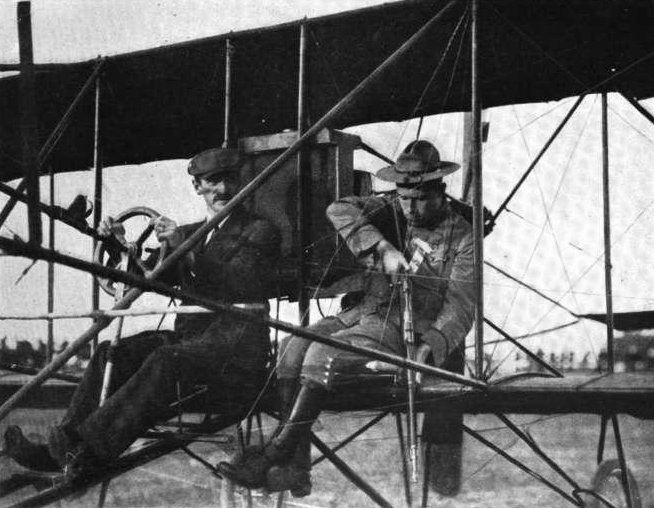August 20 in U.S. military history
1910: 100 feet over New York City’s Sheepshead Bay Race Track, Lt. Jacob E. Fickel becomes the world’s first aerial gunner. Sitting in the biplane’s passenger seat, with Glenn Curtiss at the controls, Fickel fires his Army Springfield .30-caliber rifle, demonstrating that a bullet can be fired from a moving aircraft without the recoil knocking the plane out of the sky.

Fickel goes on to command the Fourth Air Force during World War II and retires as a major general.
1912: After less than three hours of instruction, 1st Lt. Alfred A. Cunningham boards a Curtiss (yes, the famed aircraft designer that flew alongside Lt. Fickel two years ago) biplane and makes his first solo flight, becoming the Marine Corps’ first aviator. A veteran of the Spanish-American War and several Caribbean campaigns, Cunningham deploys to the Western Front during World War I where he observes aviation tactics – while over German lines – and formulates procedures for Marine aviators to use against enemy submarines and their bases.
1950: (featured image) After over two weeks of fighting at Taegu, South Korea, an outnumbered UN force consisting of the American 1st Cavalry Division and the Republic of Korea’s II Corps defeats five divisions of North Korean soldiers. MacArthur’s Pusan Perimeter still holds.
1953: Wernher von Braun watches as his Redstone rocket lifts off from Cape Canaveral (Fla.), becoming the United States’ first ballistic missile. Redstone No. 1 – built using technology from Germany’s V-2 rocket – flew for one minute and 20 seconds before it’s engine shut down and the missile falls into the ocean. It will take some time before American rocket technology improves to where the target area is actually more dangerous than the launch pad.
1977: 24 years after the first Redstone launch, a Titan III-Centaur rocket blasts off (again, from Cape Canaveral) carrying the Voyager 2 space probe. Not only have we advanced to the point of safely launching rockets, we can aim their payload with such a degree of accuracy that Voyager was able to fly by and study Jupiter, Saturn, Neptune, and Uranus. Over 40 years later, NASA is still communicating with the space probe, which is conducting research from about 11 billion miles away.
1998: U.S. Navy warships launch dozens of Tomahawk cruise missiles at a medical manufacturing plant in Sudan and terrorist training camps in Afghanistan. The attacks are a response to the al Qaeda bombings of U.S. Embassy buildings in Kenya and Tanzania earlier in the month.

Today’s post is in honor of U.S. Army Chief Warrant Officer 3 Taylor Gavin (34, Spokane, Wash.), who passed away one year ago today from wounds sustained in a helicopter crash in Sinjar, Iraq the previous day. Gavin piloted an MH-60 Black Hawk helicopter that was returning from an Operation INHERENT RESOLVE counter-terrorism mission, and flew for the 160th “Night Stalkers” Special Operations Aviation Regiment. Gavin had served two combat tours in Iraq, three in Afghanistan, and four during INHERENT RESOLVE.
